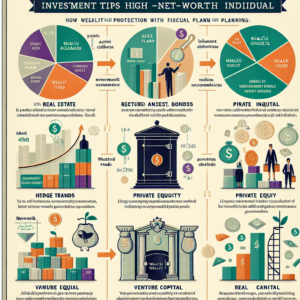
Understanding Safe Investment Options for Retirees
For retirees, the paramount investment criteria often shift towards preserving capital and generating a stable, reliable income rather than aiming for high growth. This transition demands a focus on investment options that offer lower risk. Understanding and selecting safe investment options can help ensure a comfortable and financially secure retirement. This article explores some of the most reliable and safe investment avenues for retirees.
Government Bonds and Treasury Securities
Government bonds and Treasury securities are widely regarded as some of the safest investment options available. These financial instruments are backed by the government, significantly reducing the risk of default.
Treasury Bills (T-Bills)
T-Bills are short-term securities that mature in a year or less. They’re ideal for retirees looking for a safe haven for their cash, offering returns slightly above the average savings account without the risk of losing principal.
Treasury Bonds (T-Bonds) and Notes
T-Bonds and Treasury Notes are long-term investment options, with maturities ranging from 2 to 30 years. They offer fixed interest payments, typically making them a cornerstone of a retiree’s portfolio for predictable, long-term income.
Fixed Annuities
Fixed annuities are insurance products that provide a guaranteed income for a period of time, possibly for the retiree’s lifetime. They are particularly appealing for retirees because they offer a stable income stream, protection against longevity risk, and are generally considered low-risk investments.
Immediate Annuities
Immediate annuities start paying out almost immediately after investment. This can be particularly useful for retirees looking to supplement their income right away without exposing themselves to market risk.
Deferred Annuities
Deferred annuities, on the other hand, begin paying out at a future date. This can be a strategic option for those planning for later-in-retirement needs.
Certificate of Deposit (CD)
Certificates of Deposit (CDs) are time-bound deposit accounts offered by banks with fixed interest rates. CDs are federally insured and offer a higher interest rate than traditional savings accounts, making them a safe choice for retirees. However, the money in a CD is untouchable for a set period without incurring a penalty, so liquidity can be a concern.
Dividend-Yielding Stocks
While investing in stocks inherently carries more risk than bonds or CDs, focusing on companies with a long history of paying dividends can offer a relatively safe source of income. These companies are typically well-established and financially stable, providing a certain degree of security for retirees.
Diversification
To mitigate risk, retirees should consider holding a diversified portfolio of dividend-yielding stocks, spreading their investment across multiple sectors to hedge against sector-specific risks.
Money Market Funds
Money market funds invest in short-term, high-quality debt securities. They offer higher returns than savings accounts and are considered low risk. However, it’s important to note that they’re not FDIC insured, even though they are relatively safe.
Concluding Thoughts
Choosing safe investment options is crucial for retirees who aim to protect their capital while generating a reliable income stream. Government bonds, fixed annuities, CDs, carefully selected dividend-yielding stocks, and money market funds represent some of the safest investment avenues. However, it’s important for retirees to consider their individual risk tolerance, income needs, and financial goals when building their investment portfolio. Consulting with a financial advisor can also provide personalized advice and help retirees navigate their investment choices effectively.





